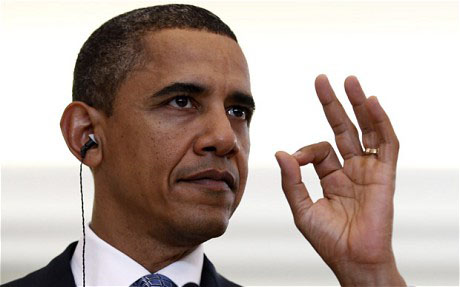
Posted on 03/01/2021 1:55:20 PM PST by SJackson
The “svastika” is a 3000 year old Sanskrit symbol. In Chinese culture, its a symbol of Buddhism and in Taiwan in particular, if you see it in a restaurant, it means its vegetarian
The Nazis literally “stole” the symbol, and quite ironically, reversed it. I guess because they thought it looked cool.

Perhaps a little off topic, but relevant given the multiple threads about liberals and Hyatt Hotels accusing CPAC of designing their stage in the image of an Othala/Odal Rune, which was amongst many things used by the Nazis. Not obvious to me.


As to the vegetarian swastika, a symbol used by Buddhists and Hindus, sometimes it's backwards, sometimes not, as Lily's Restaurant in England demonstrates.
 demonstrates. Lily got in "trouble" too.
demonstrates. Lily got in "trouble" too.
His mother was white, nothing preventing him from being a white supremecist other than his belief in the one drop rule, embraced by Democrats through the Jim Crow period and today.
I just mentioned this earlier today in another thread.
https://freerepublic.com/focus/news/3938657/posts?page=23#23
It’s kosher, but also no meat.
It’s most similar to vegan.
Taiwan restaurants do a great job making this food taste great.
IIRC it is a spinning wheel with the hooks gathering spiritual matter.
If it spins one way it collects good (or light) spiritual energy, if the other it gathers bad (or dark) spiritual energy.
So Indian = good energy, Nazi = bad energy
I was in Taichung once and saw a “Talmud Hotel.” I went inside and established that it is just one of those eccentric (to native speakers) uses of foreign words one sees throughout the Far East.
Oh good Lord.
You have to have "Jewish Food"?
Stay home then. The whole world doesn't revolve around you.
Food is food. Eat the food.
“I’ll have the vegetarian eggrolls, noodles in sauce, and I’d like to annex the Sudetenland please.”
CC
The counter clockwise rotating swastika is Nazi symbol, co-opted by the Nazi Party from Hindu mythology.
"Svastika," BTW is a Sanskrit word.
The clockwise rotating svastika is the religious symbol. It was taken from the way the various faults and strata of Mount Kailas appear in the Himalayas during the spring when the snow melts off that mountain. Mount Kailas was thought to be the center of the whole universe and that the gods dwell on its summit. That is why the Nazis co-opted the symbol and made it go backwards so as to bring back the supremacy of the Aryan race.It is thought that the Nazis also had secret rituals about this.
All this is from an understanding of the religious history of the Himalayas and the purposeful Nazi appropriation of a mystic symbol, which has been manifest in both Buddhist and Hindu religions for many thousands of years.
The Nazis actually believed they could turn back time with a counter rotating svastika, back to a time when the Germanic tribes would once again rule Europe and eventually the world.
Mt Kailas with it's only partly exposed svastika:

It has a long history of meaning good luck.
I have a lamp of my great grandmother’s that have the symbol around the base. I was concerned as a child that the lamp had Nazi connections. Gram assured me that the lamp predated Nazis, the shape was different and it came from shipments from Asia, our family had some import/export trade, and that the Step family that was Jewish was not the least bit concerned.
The swastikas or hakenkreuz was also part of celtic, nordic and middle ages Europe imagery. It had a positive connotation until the Nutsis
Actually I’ve seen Buddhists use both symbols. Same for American Indians.
https://nypost.com/wp-content/uploads/sites/2/2020/07/buddhist-swastika.jpg?quality=90&strip=all
Jainist
https://s3.amazonaws.com/jainworldwp/education/junl20i1.gif
American Indian basketball team
https://upload.wikimedia.org/wikipedia/commons/9/9f/Native_American_basketball_team_crop.jpg
Then there is Russian Communists
http://www.proswastika.org/e107_images/newspost_images/europe_socialist-swastika1919-1920cav.jpg
Humblegunner,
LOL, you do realize as a tenet of their faith requires them to eat only Kosher food?
I’ve been all over the world and have eaten just about anything in those countries...Unfortunately most 3rd world cities, not Paris.....
Nevergore

The Auspicious Swastika
The Auspicious Swastika
The East’s right to this millennia-old global mark of good fortune suffers from decades of abuse as the symbol of the Nazi Party and racial supremacy
By Jane Srivastava, South Carolina, USA
Hinduism Today Magazine
April-May-June 2005
The swastika is as holy to the Hindus, Jains and Buddhists as it is evil to people from the West. When a symbol represents diametrically opposite concepts to different groups of people, a natural conflict arises. Asians who immigrate to the United States encounter obstacles when trying to incorporate the swastika into their religious ceremonies. Here in America, like in the rest of the Western world, the Hindus’ and Jains’ most cherished and holy symbol is viewed only as a legacy of the atrocities and murders committed under the Nazi black swastika. Many Americans do not know the history or the importance of the symbol to Hindus. The results of this ignorance are real. Hindu temples have been vandalized, religious ceremonies displaying swastikas interrupted and upright devotees accused of neo-Nazism. The swastika is such a ubiquitous symbol of goodness throughout the East that many less-educated Asians are themselves unaware that the swastika could signify any evil concept.
My great-grandparents were murdered by the Nazis. As a Jewish person raised in Europe, for most of my life I have associated the swastika with the Nazis and Nazi heritage—extermination of millions of people, destruction of countries and superior racist ideology. The sight of a swastika alone rouses such strong feelings in me that I naturally want to look away after a second or two. The pain I feel when looking at the swastika is as strong as if I had lived through the war myself.
When I first saw a swastika on an Indian greeting card, I was taken aback: “Why is this offensive Nazi symbol displayed on a wedding invitation?” I knew that the Nazis stole the symbol from the ancient cultures, particularly India. However, I had assumed that, after World War II, the evil associated with the symbol prevented the original cultures from using it.
As I am learning more about the Indian culture and religion, I am becoming more curious about the symbolism of the swastika and the present-day conflict surrounding it.
Swastika is a Sanskrit word, su meaning “good, “ asti meaning “to be “ and ka, a suffix. It is translated as “good being, “ “fortune, “ literally “it is well “ or “conducive to well-being.” For Hindus, the swastika is a symbol of auspiciousness, prosperity and good fortune. It also represents the sun and the cycle of life. In Loving Ganesha, Satguru Sivaya Subramaniyaswami, founder of Hinduism Today, explains the significance of the swastika to Hindus: “The swastika’s right-angled arms reflect the fact that the path toward our objectives is often not straight, but takes unexpected turns. They denote also the indirect way in which Divinity is reached—through intuition and not by intellect. Symbolically, the swastika’s cross is said to represent God and creation. The four bent arms stand for the four human aims, called purushartha: righteousness, dharma; wealth, artha; love, kama; and liberation, moksha. This is a potent emblem of Sanatana Dharma, the eternal truth. It also represents the world wheel, eternally changing around a fixed center, God. The swastika is regarded as a symbol of the muladhara chakra, the center of consciousness at the base of the spine, and in some yoga schools with the manipura chakra at the navel, the center of the microcosmic sun (Surya). Hindus use the swastika to mark the opening pages of account books, thresholds, doors and offerings. No ceremony or sacrifice is considered complete without it, for it is believed to have the power to ward off misfortune and negative forces.”
For the Jains, the swastika represents four types of birth which an embodied soul might attain. The swastika has been adopted as part of a single symbol to represent the Jain community. In the Buddhist tradition, the swastika symbolizes the feet or footprints of the Buddha. It is often used to mark the beginning of texts. Modern Tibetan Buddhists use it as a clothing decoration. In China and Japan, the swastika has been used to represent abundance, prosperity and long life.
Before the Nazis stole the swastika from the ancient world, various cultures throughout Asia, Europe and the Americas had been uniform in assigning some positive and favorable meaning to the symbol. For the most part, these peoples had used the swastika sign in their religious practices to symbolize life, the sun, good fortune and prosperity. In the decades before World War II, the swastika was used as a design motif and symbol of good fortune in the United States, appearing ubiquitously on such items as greeting cards, magazine covers, book jackets, posters, playing cards, poker chips, jewelry, fruit wrappers and business logos. Even the Boy Scouts issued a “Swastika Thanks Badge, “ to be given to anyone who had done a kindness to a scout. Before the Nazis, the swastika sign had never been used to represent an evil concept or racist ideology. After World War II, Western cultures no longer used the symbol as they had prior to the Third Reich. Most Europeans and Americans still perceive any swastika as a Nazi or neo-Nazi symbol, despite differences in its color and the direction in which it points.
In the late nineteenth and early twentieth century, the swastika became a common symbol of German nationalism, meant to represent a long Germanic/Aryan history. As well it became a symbol of many anti-Semitic organizations. Adolf Hitler adopted the swastika when the German National Socialist Party (Nazi Party) was formed in 1919-1920.
The Nazis regarded themselves a superior race. Based on information from Hitler’s pet archaeologist Gustaf Kossinna, Hitler believed and propagated the idea that Aryans (from arya, “superior being “ or “noble “) were a master race of Indo-Europeans living in Eurasia, Nordic in appearance and directly ancestral to the German people.
The Jews are understandably sensitive to the swastika. Anti-Semitism was central to the Nazi movement. In Mein Kampf, Hitler described the symbolic meaning of the Nazi flag: “In red we see the social idea of the movement, in the white the nationalistic idea, in the swastika the mission of the struggle for the victory of the Aryan man and, by the same token, the victory of the idea of creative work, which as such always has been and always will be anti-Semitic.” As an ethnic group targeted for systematic elimination under the mark of the black slanted swastika, all Jewish people had been touched by the Holocaust. It is hard, therefore, for any Jew to see a sign of good fortune in a scrawled swastika on a door or wall.
Thus, a conflict arises between the significance that Hindus assign to the swastika and the treatment of the sign by most Westerners as a symbol of hatred inherited from the Nazis, intensified as so many people from India and Asia arrive to work or live in Europe and America. Those immigrants include simple, uneducated people from rural areas who do not know of the prevalent stigma of the swastika in the West. Just as Westerners are unaware of the positive history of this ancient symbol, many less educated Asians do not know that it could be anything but auspicious. Because of the difference in the meaning of the symbol for the two cultures, people from India who display the sign may lose their job, be ostracized or threatened, even become victims of hate crimes.
Often when something is written in the Western media about the possibility of bringing back the ancient symbol of the swastika notwithstanding its Nazi significance, such words as redemption or rehabilitation are used. Even Hindus and Jains use similar words in their appeal to “rehabilitate “ their sacred symbol. Some authors discussing the return of the swastika opine that once the swastika is used for evil purposes, it cannot be redeemed. “Certain symbols might easily exist ambiguously or with multiple meanings, but ultimately not the swastika. For what once exemplified good fortune now manifests malevolence. What was once innocent is forever guilty & As long as it embodies even an iota of evil, it will never again be redeemed, “ declared graphic design guru Steven Heller in his book The Swastika: Symbol Beyond Redemption?
To redeem something means to extricate from an undesirable state or make up for defects. To rehabilitate means to bring something back to its previous normal condition, to cure it. None of these words seems appropriate. There was nothing wrong with the swastika that we now need to make up for its defects or cure it. It got into the wrong hands which used it as a symbol for their hateful deeds and ideology in perhaps what was the world’s most effective, integrated propaganda campaign. Thus, more appropriate words to describe what needs to be done with the swastika’s image would be acceptance, education, reconciliation and harmonization. So how do we reconcile the importance of the swastika for Hindus, Buddhists and Jains with its negative legacy in the West? How can we reduce the conflict and promote acceptance?
Education is the only thing that might promote a better understanding between the Hindus living in the Western world and their new countrymen. It is important that in the United States there be more written and said about the meaning of the symbol to Asian cultures and religions. Such an education should start in schools where Hindu, Christian and Jewish kids are taught world religions. When discussing Hinduism, the swastika and its important place in Hinduism must be taught to children. Learning more about Asian cultures and religions will result in tolerance and respect for other cultures’ ways of life and their religious practices.
The swastika is not the only symbol whose original godly and favorable significance was used for evil purposes. Under the Christian cross, brutal crusades to convert masses to Christianity took place, during the Medieval Inquisition millions of heretics were burned in fires, and in the United States, black Americans were persecuted and murdered by the Ku Klux Klan. However, the cross has not become a forever detested and condemned symbol.
Because of our differences in geography, culture and experience, people from different parts of the world will treat symbols differently. As an Eastern European immigrant, I don’t believe I can disassociate the swastika from the meaning I grew up with. But after learning about Hindu culture, I have become aware of the importance of the swastika to Hindus and now deeply respect the symbol’s significance and holiness. With knowledge and understanding, people from the Western world, while not forgetting their countries’ experiences, can embrace the swastika as an auspicious sign of the Asian world. As education and awareness replace prejudice, intolerance and narrow-mindedness, there is hope people will start to see the historical richness as well as the present-day significance of the swastika, and not just its Nazi past.
Jane Srivastava holds a bachelor’s degree from Vilnius State University, Lithuania, and a degree from the Albany Law School, Albany, New York.
https://www.hinduismtoday.com/modules/smartsection/item.php?itemid=1411
No, it’s because white privilege does not exist, but black privilege does.
Disclaimer: Opinions posted on Free Republic are those of the individual posters and do not necessarily represent the opinion of Free Republic or its management. All materials posted herein are protected by copyright law and the exemption for fair use of copyrighted works.